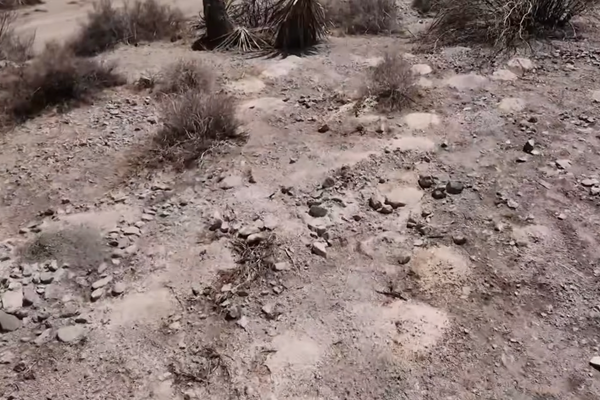
Support truly
independent journalism
It’s possible I got a bit carried away. We were standing on the central arch of the Kalogeriko-Plakidas bridge in central Zagori, on a crystal-clear summer morning. An emerald-coloured river snaked away through a valley of deep green trees towards a mountain village. There was the slightest breath of wind.
I announced to my somewhat bemused wife that I was going to change my will. I wanted my ashes to be cast from this very spot, right there in the heart of Zagori. Given I’d no connection to the place and that we’d only been there a couple of days, it was a slightly weird thing to do.
Back home, when the enchantment of that trip wore off, I decided the Jones mortal remains wouldn’t end up in that patch of Greece after all. But the spell of the place lingered. Was I getting carried away? Now I’d get the chance to find out. After several years away, I was about to return to Zagori. But what was it about this place that had moved me so dramatically?
First – where, again? Zagori is a mountainous region in the Epirus region of northwest Greece. You’ll also see it called Zagorichoria (hard to say: try it while choking on an almond) or after its most celebrated landmark, Vikos.
Read more on Greece travel:
- Exploring ruins and beers by the pool – why this European island is perfect for an ‘inbetweeners’ holiday
- The best hotels in Corfu for beachfront stays and boutique getaways
- The perfect holiday destinations in Greece for every type of traveller
We drive from Athens, over the Patras bridge – is there a finer 21st-century bridge in Europe? – and stop off at the village of Zitsa, near the regional centre of Ioannina. The poet Lord Byron had a great night here in 1810. and I wanted to see what he so liked about the place. The answer was the wine, the hospitality and the views. There, on the horizon, is a line of snow-capped peaks: the Zagori.
I might as well relieve the tension now. As we drive through the first Zagori village, Mesovouni, it is obvious nothing had changed. It’s still heaven and no-one has been allowed to pollute it.
The region became very prosperous during the long centuries of Ottoman overlordship – especially in the 18th century, when its close connection to the Balkans states and beyond made its people fabulously rich. Two groups especially prospered: herbalist healers, the so-called ‘Vikos doctors’, who became renowned in the Ottoman court; and bridge builders.
They left a legacy of mountainside villages and fine, substantial houses. They also embraced an early form of nimbyism. No-one was allowed to build between the villages. They still aren’t. It’s that kind of far-sightedness that gets you a Unesco geopark listing. It’s justified: Zagori makes Tuscany look scrappy.
Yet the 20th century brought decline, poverty and – during the war years – violent oppression. Zagori was the site of a famous victory against the Italian army in 1941, commemorated in a fine monument on the Asprengalon road above Aristi and another in the village of Kalpaki. The Nazis took over the job of suppressing the region with predictably savage results.
The renaissance began with the political changes of the 1990s, when labour and skills from neighbouring and liberated Albania helped restore those Georgian-style mansions. The EU funded a fine new highway from Thessaloniki. The hoteliers moved in and Zagori grew a new economy based on active travellers seeking pure air, soft adventure and wonderful, homemade food.
All of those are in rich supply in Zagori. Your main decision now is how soft you want your adventure to be, and where to base yourself.
High on a walking trail above Mikro Papigo I discovered option one when I meet father and son tourists, both keen hikers. They told me they were trekking between inns: no forward booking, just showing up and spending about €50 (£43) a night. Those inns are plain, sturdy and always in beautiful places – as there is no other kind of place around here. What a wonderful (and cheap) trip that’d be.
Option two is what I did last time. Choose a central location that’s handy for a wide range of adrenaline-filled adventures. On that first trip, we were in Aristi and the excellent Aristi Mountain Resort and Villas. We went whitewater rafting and took the horrendously scary, and completely exhilarating, cliff path between the Monastery of Saint Paraskevi in Monodendri and hermit’s cave 800 metres above the gorge.
We walked the Vikos Gorge itself, Europe’s deepest and widest. It takes several hours from Mododendri to the village of Vikos (the gorge is 900 metres deep and 1,100 metres from rim to rim). The last part, back up to Vikos itself, is punishing. But it’s worth every drop of lactic acid in the joints, not least for the cold Mythos beer at the end.
Option three was the one we took this time. With less time – three days – we choose to base ourselves in a single village, forget about the car, and just immerse ourselves in the place.
To get to Mikro Papigo, you head north-east from Aristi: then you are confronted with Greece’s version of the Stelvio Pass – a mad succession of hairpin bends. The road is quite good fun the first time; you don’t want to be doing it several times a day.
You then descend to a narrow bridge over the Voidomatis river. This is about as busy as Zagori gets. It’s a favourite picnic spot for daytrippers, and also where the whitewater and kayaking companies launch their various craft.
There are two Papigos. The first, Megalo, has two streets and sort-of square; but it seems positively urban compared to its smaller neighbour, Mikro. As you dip down into the valley between the villages, there’s the Rogovo stream. The river has cut a path through flat limestone, creating a tiered path leading to a wide rock pool. This may just be the perfect respite for tired, hot feet.
I wanted my ashes to be cast from this very spot, right there in the heart of Zagori
Mikro is nestled in the mountainside. At certain times of the day, the dark limestone of the houses can be hard to pick out. Readers from Yorkshire might encounter a Zagori village like this and be momentarily fooled that they’re in Hebden Bridge.
But only momentarily, because behind Mikro are the Towers of Papigo, a line of limestone mountains reaching almost 2,500 metres at Astraka, the highest point; Hebden Bridge doesn’t have anything like that.
Mikro is so micro that you have to park the car by the Taxiarchon church and walk to your accommodation. It is the end of this particular Zagori line: after this, it’s all scree, woods and cliffs.
The Mikro Papigo 1700 hotel is a cluster of traditional buildings built in – you may have guessed – 1700. The main house’s bedrooms have small balconies, while the separate, larger annex room has double doors leading onto its own sun terrace. Like every place in Zagori I’ve been to, the food is local, healthy and wonderful. It’s one of those rare and fortunate places where it really is cheaper and easier to source your meat and veg from the local area; the €17 (£14.50) beef fillet would cost five times that in a London restaurant.
And that’s about it. Three days of pastries, the very good local rosé, strong coffee, gentle walks through woods of oak, maple and spruce, the purple blossom of the Judas tree lighting up the hillsides.
I do one excursion. Zagori’s option four is to get a map of the bridges constructed by the region’s master craftsmen in the 18th and 19th centuries. Some are more dramatic than others, but all are poetry in stone. I choose to walk between two of them. From the much-photographed, high span of the Koukouri (or Kokkori), you take a riverside path through an almost Scandinavian landscape of baked mud, grassland, glades and low trees before reaching one of the smallest and most secluded of Zagori bridge builders’ masterworks: the Misios.
I look back down on a river of white pebbles and boulders. It’s been a lot drier than it should be here. Local people call it the year without a winter. It turns out nothing changes in the Zagori, except one thing: the climate.
Travel essentials
How to do it
There are daily flights to Athens from London Heathrow with Aegean Airlines. Hire a car from local firm Arena.
Where to stay
Mikro Papigo 1700, Mikro Papigo
Rooms available from{{#price}}{{price}}per night{{/price}}{{^price}}Check availability for dates and prices{{/price}}
Rates provided by Booking.com
St George Lycabettus, Athens
Rooms available from{{#price}}{{price}}per night{{/price}}{{^price}}Check availability for dates and prices{{/price}}
Rates provided by Booking.com
Read more: The perfect holiday destinations in Greece for every type of traveller







